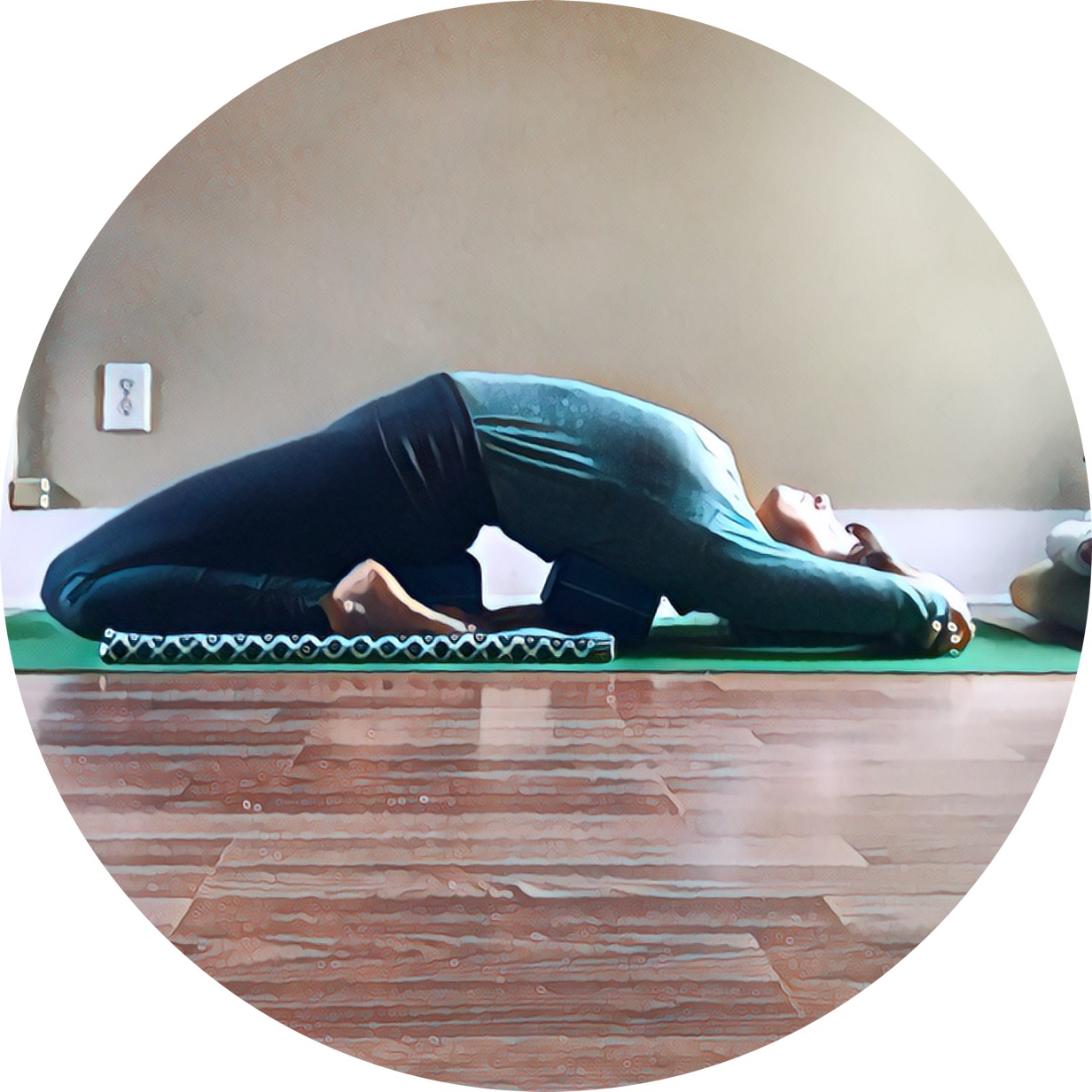We are so "finished pose" oriented in this country. Nobody wants to be the schmuck who doesn't look like B.K.S. Iyengar in their one-handed handstand, right? It's pretty common to see an intense amount of strain from a student who just isn't ready to go deeper.
I always try to give a few options of steps along the way to a peak pose--something like, "your first option is to work pigeon pose, when you're ready, you can add pigeon with the thigh stretch and for those of you who are quite open in your shoulders, you might try
eka pada raja kapotasana."
Inevitably these initial suggestions go unexplored. Everyone jumps directly into what they perceive to be the "final posture." They cram their legs and arms into extreme angles, forgetting entirely to breathe, or to be present or to find any joy in this process of yoga. And this is how injuries happen and this is how people come to the conclusion that they "aren't good at yoga."
 |
| The process of joy in this one took some work. |
When I went to India to study with the Mohan's (see a post on that
here) I was struggling between an orientation that was largely based in
asana (posture) and one that was more interested in the movement of
prana (life force/energy)
. I had just come off a week-long
tantra intensive that was very um, intense in the
pranic realm. I had ruffled my accrued lifetime of yucky stuff (
karma) and wasn't really sure of how to best proceed.
 |
| The man himself, Krishnamacharya |
The Mohan's are like the most pragmatic yogis that you've ever met. They teach Yoga Therapy as developed by Krishnamacharya. You know that guy? The one who taught all the modern day masters?
Ganesh, the son of the Mohan's, is trained as a medical doctor and an ayurvedic doctor. So yeah, he's pretty into wellness. And he happens to be one of the best teachers I've ever had. This is why--he's incredibly thorough and every single thing that he instructs is based on breath. The reason that you would go to a yoga therapist and not a physical therapist is because yoga connects to the breath and it creates an energy (
prana) in the body that you don't get from doing exercises alone.
Breathe! Be present! Find joy in the process!
That's the rub, people. The reason that yoga works isn't because people with flexible hamstrings have more fun (bumper sticker?). It's because yogis who practice regularly just automatically start to slow down and experience more of life. When you base your practice on your natural cycle of breath, and you really really pay attention, you can't help but be more aware. And when you become more aware, it's easier to realize to all of the beautiful things that exist in a day, or in a moment!
And in my experience it becomes easier to appreciate small things at first and then larger things like being alive, and having friends and family and the fascinating world.
The process of yoga is a process of tracking down joy--true inner joy that can only come from you. The next time you're in class and your teacher gives you options, maybe try the first, fully connected to your breath and fully connected to a sense of joy before moving on to step two.


